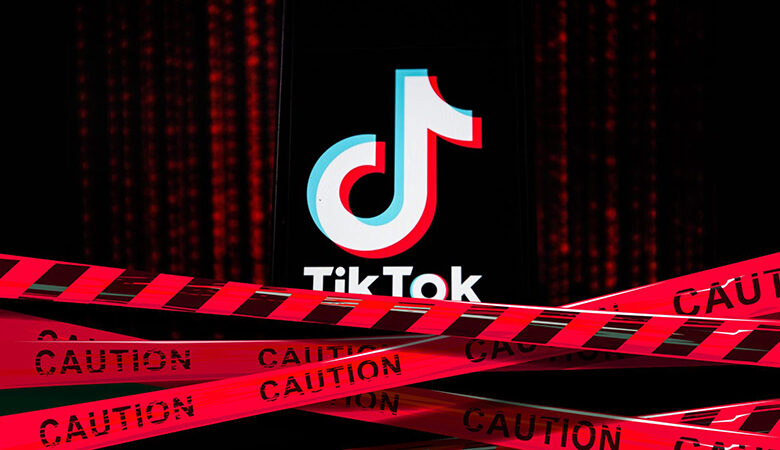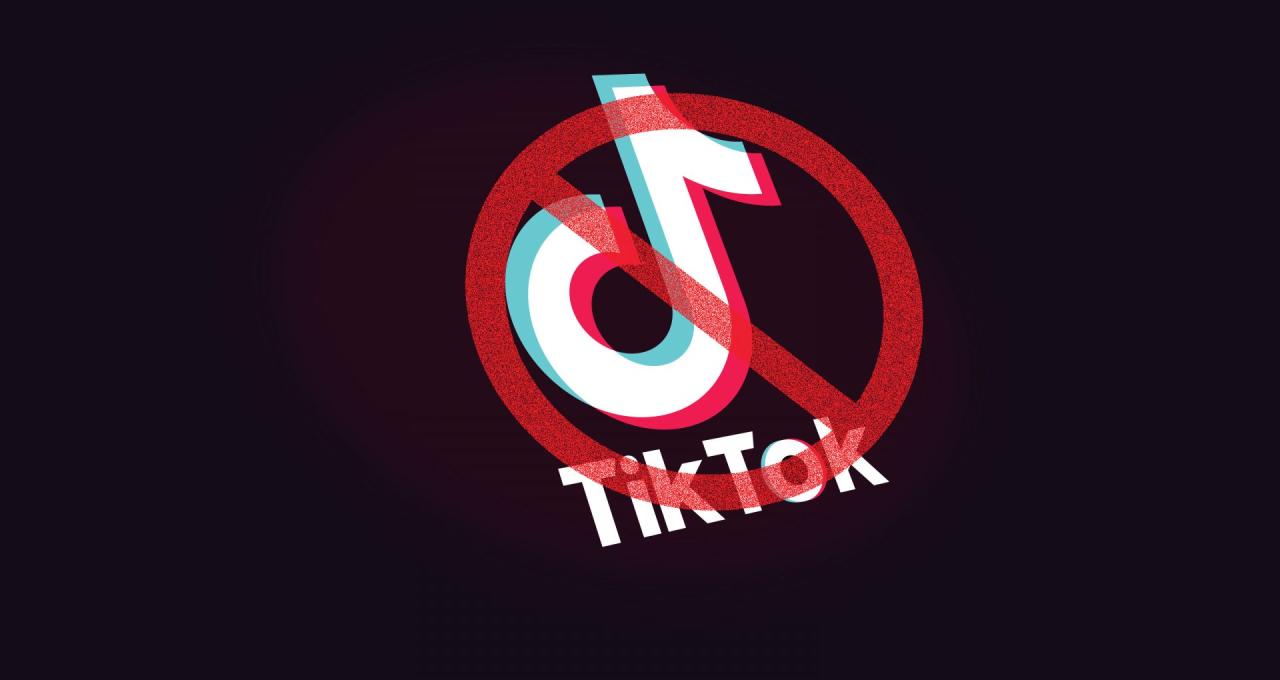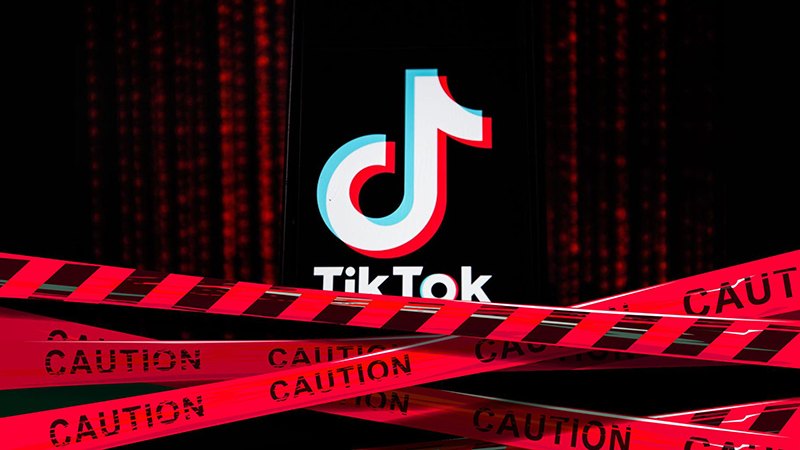
The Side Effects of the TikTok Tussle
The Side Effects of the TikTok Tussle – it’s a phrase that’s starting to feel less like a catchy headline and more like a necessary warning. We’re all familiar with TikTok’s addictive scroll, the endless stream of dances, trends, and seemingly effortless perfection. But beneath the surface of those captivating videos lies a complex web of potential consequences, impacting our mental health, physical well-being, relationships, and even our finances.
This isn’t about demonizing TikTok; it’s about understanding the potential downsides of a platform that’s become so deeply woven into our daily lives.
From the anxiety-inducing pressure of social comparison to the very real physical dangers of some viral challenges, the effects of excessive TikTok use are far-reaching and deserve a serious look. We’ll explore the impact on sleep, self-esteem, relationships, and even our critical thinking skills, offering insights and prompting reflection on our digital habits. Are we truly benefiting, or are we unknowingly succumbing to the subtle, yet significant, side effects of the TikTok tussle?
Mental Health Impacts of TikTok Use

The seemingly innocuous nature of short-form video content on TikTok belies a potentially significant impact on the mental well-being of its users, particularly young adults. The addictive design, coupled with the constant exposure to curated realities, creates an environment ripe for negative mental health consequences. This section will explore the correlation between excessive TikTok use and anxiety, the effects of social comparison and cyberbullying, and the promotion of unhealthy body image and eating disorders on the platform.
Excessive TikTok Use and Anxiety
Excessive use of TikTok, like other social media platforms, has been linked to increased anxiety levels in young adults. The constant stream of notifications, the pressure to create engaging content, and the fear of missing out (FOMO) contribute to a state of heightened alertness and worry. Studies have shown a positive correlation between time spent on TikTok and reported anxiety scores, particularly among individuals who already exhibit pre-existing vulnerabilities.
The relentless nature of the platform’s algorithm, designed to keep users engaged for as long as possible, exacerbates this effect, creating a cycle of anxiety and compulsive use. The pressure to maintain a carefully curated online persona also contributes significantly, as users constantly strive to present an idealized version of themselves, leading to feelings of inadequacy and self-doubt.
Social Comparison and Cyberbullying’s Impact on Self-Esteem
TikTok, with its emphasis on visual content and popularity metrics, fosters a culture of intense social comparison. Users are constantly exposed to seemingly perfect lives, flawless bodies, and seemingly effortless achievements, leading to feelings of inadequacy and low self-esteem. This is further compounded by the prevalence of cyberbullying on the platform. Negative comments, hateful messages, and the spread of embarrassing or humiliating content can have devastating effects on mental health, particularly among vulnerable young people.
The anonymity offered by the internet often emboldens bullies, making it easier for them to inflict harm without facing immediate consequences. The public nature of TikTok exacerbates the impact of cyberbullying, as hurtful comments can be seen by a large audience, amplifying the feelings of shame and humiliation.
TikTok Content Promoting Unhealthy Body Image and Eating Disorders
Many TikTok trends promote unrealistic and often unhealthy body images. Videos showcasing extreme weight loss or promoting restrictive diets are common, often without any mention of the potential health risks. Similarly, content that glorifies specific body types or promotes body modification procedures can contribute to body dissatisfaction and the development of eating disorders. The algorithm, designed to personalize content based on user engagement, can inadvertently reinforce these harmful trends, leading users down a rabbit hole of increasingly restrictive and damaging content.
For example, certain hashtags related to weight loss or specific body types might inadvertently lead users to content promoting unhealthy eating habits or dangerous weight loss methods.
Comparison of Mental Health Effects Across Social Media Platforms
| Platform | Anxiety | Depression | Body Image Issues | Cyberbullying |
|---|---|---|---|---|
| TikTok | High | Moderate to High | High | High |
| Moderate to High | Moderate | High | Moderate | |
| Moderate | Moderate | Moderate | Moderate | |
| Moderate | Moderate | Low | High |
Physical Health Consequences: The Side Effects Of The Tiktok Tussle

The seemingly innocuous act of scrolling through TikTok can have surprisingly significant consequences for our physical well-being. Beyond the mental health impacts already discussed, the sheer volume of time spent on the platform contributes to a range of physical health problems, largely stemming from prolonged screen time and the influence of viral trends. This section explores the detrimental effects of excessive TikTok use on our bodies.
Prolonged screen time, a hallmark of consistent TikTok usage, directly impacts two crucial aspects of physical health: sleep and vision. The blue light emitted from screens interferes with the production of melatonin, a hormone regulating sleep-wake cycles. This disruption leads to difficulty falling asleep, reduced sleep quality, and ultimately, sleep deprivation. The constant visual stimulation from videos and fast-paced content further strains the eyes, potentially contributing to eye strain, headaches, and even long-term vision problems like myopia (nearsightedness).
Sleep Disturbances and Vision Problems from Prolonged Screen Time
The addictive nature of TikTok’s algorithm, designed to keep users engaged for as long as possible, exacerbates these problems. Many users report spending hours scrolling through their “For You” page, often late into the night. This leads to a vicious cycle: poor sleep quality reduces daytime productivity and alertness, prompting individuals to seek further escapism in the readily available entertainment of TikTok, further disrupting their sleep patterns.
Similarly, the close proximity of the screen to the eyes during extended use contributes to eye strain and potential long-term vision impairment. Studies have shown a correlation between increased screen time and a higher prevalence of myopia, particularly among young people who are already more vulnerable to vision problems.
Risky Behaviors Promoted by TikTok Trends
Beyond the direct effects of screen time, TikTok trends themselves pose a significant risk to physical health. The platform’s viral nature often encourages participation in challenges, some of which have resulted in serious injuries or even fatalities. The pressure to conform, the desire for social validation, and the potential for viral fame can override rational judgment, leading individuals to engage in reckless behavior.
Examples of TikTok Challenges Resulting in Physical Injuries
Numerous examples exist of TikTok challenges leading to physical harm. One infamous example involved a challenge encouraging users to perform dangerous stunts, resulting in numerous broken bones and other injuries. Another trend involved ingesting potentially harmful substances, leading to hospitalizations and health complications. These incidents highlight the potential for serious consequences when the pursuit of online validation overrides personal safety.
Physical Health Problems Potentially Linked to Excessive TikTok Use, The side effects of the tiktok tussle
The cumulative effect of prolonged screen time and participation in risky trends contributes to a range of potential physical health problems. While more research is needed to establish definitive causal links, there’s growing evidence suggesting a correlation between excessive TikTok use and these issues.
- Sleep deprivation
- Eye strain and headaches
- Myopia (nearsightedness)
- Neck and back pain (from poor posture)
- Carpal tunnel syndrome (from repetitive scrolling)
- Injuries from participating in risky challenges
- Obesity (due to sedentary behavior and potential unhealthy eating habits influenced by trends)
The TikTok tussle isn’t a simple battle with a clear winner or loser. It’s a complex relationship, one where the potential for both positive and negative outcomes exists. Understanding the potential downsides – the mental health impacts, the physical risks, the strain on relationships, and the influence on our cognitive abilities – is crucial to navigating this digital landscape responsibly.
It’s not about abandoning TikTok entirely, but about fostering a healthier, more conscious relationship with the platform. By being aware of the potential pitfalls, we can empower ourselves to use TikTok in a way that enriches our lives, rather than detracting from them.
The TikTok tussle isn’t just about viral dances; its side effects ripple far beyond the app. The constant distraction, the curated realities, contribute to a global disconnect, making it harder to focus on crucial real-world issues like the escalating conflict in Ukraine. For instance, the situation is worsening, as highlighted in this alarming report on the danger in Donbas as Ukraine’s front line falters , a conflict largely overshadowed by the endless scroll.
Ultimately, this digital noise pollution exacerbates the side effects of the TikTok tussle, hindering our ability to engage with critical global events.
The TikTok tussle isn’t just about app downloads; it’s highlighting a broader tech rivalry. This competition extends beyond social media, as evidenced by the fact that, surprisingly, China’s robotaxis are racing ahead of Tesla’s , showcasing a different kind of technological dominance. This rapid advancement in AI and autonomous vehicles further underscores the complex geopolitical implications of the ongoing TikTok debate, impacting far more than just our scrolling habits.
The TikTok tussle isn’t just about data privacy; it highlights the complexities of global tech regulation. The potential fallout, including economic repercussions, makes me wonder about the wisdom of other large-scale financial interventions, like the one discussed in this insightful article about why an american sovereign wealth fund is a risky idea. Ultimately, both situations underscore the need for careful consideration of long-term consequences before implementing sweeping changes.

